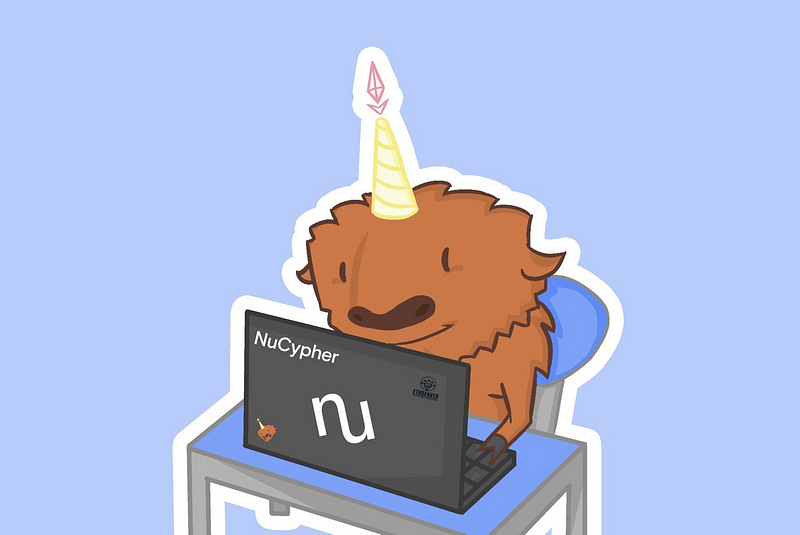
In order to contribute new code or documentation changes, you will need a local copy of the source code which is located on the pyUmbral GitHub.
Note
pyUmbral uses git for version control. Be sure you have it installed.
Here is the recommended procedure for acquiring the code in preparation for contributing proposed changes:
- Use GitHub to Fork the nucypher/pyUmbral repository
- Clone your fork's repository to your local machine
$ git clone https://github.com/<YOUR-GITHUB-USERNAME>/pyUmbral.git- Change Directories into
pyUmbral
cd pyUmbral- Add nucypher/pyUmbral as an upstream remote
$ git remote add upstream https://github.com/nucypher/pyUmbral.git- Update your remote tracking branches
$ git remote update- Install pyUmbral
$ pip3 install umbralpyUmbral tests are written for execution with pytest.
For more details see the Pytest Documentation.
To run the tests:
(pyUmbral)$ pytestNuCypher takes pride in its commit history.
When making a commit that you intend to contribute, keep your commit descriptive and succinct. Commit messages are best written in full sentences that make an attempt to accurately describe what effect the changeset represents in the simplest form. (It takes practice!)
Imagine you are the one reviewing the code, commit-by-commit as a means of understanding the thinking behind the PRs history. Does your commit history tell an honest and accurate story?
We understand that different code authors have different development preferences, and others are first-time contributors to open source, so feel free to join our Discord and let us know how we can best support the submission of your proposed changes.
When considering including commits as part of a pull request into nucypher/pyUmbral, we highly recommend opening the pull request early, before it is finished with the mark "[WIP]" prepended to the title. We understand PRs marked "WIP" to be subject to change, history rewrites, and CI failures. Generally we will not review a WIP PR until the "[WIP]" marker has been removed from the PR title, however, this does give other contributors an opportunity to provide early feedback and assists in facilitating an iterative contribution process.
As an effort to preserve authorship and a cohesive commit history, we prefer if proposed contributions are rebased over master (or appropriate branch) when a merge conflict arises, instead of making a merge commit back into the contributors fork.
Generally speaking the preferred process of doing so is with an interactive rebase:
Important
Be certain you do not have uncommitted changes before continuing.
- Update your remote tracking branches
$ git remote update
... (some upstream changes are reported)- Initiate an interactive rebase over nucypher/pyUmbral@master
Note
This example specifies the remote name upstream for the NuCypher organizational repository as
used in the Acquiring the Codebase section.
$ git rebase -i upstream/master
... (edit & save rebase TODO list)- Resolve Conflicts
$ git status
... (resolve local conflict)
$ git add path/to/resolved/conflict/file.py
$ git rebase --continue
... ( repeat as needed )- Push Rebased History
After resolving all conflicts, you will need to force push to your fork's repository, since the commits are rewritten.
Warning
Force pushing will override any changes on the remote you push to, proceed with caution.
$ git push origin my-branch -fNote
sphinx is a non-standard dependency that can be installed
by running pip install -e .[docs] from the project directory.
Documentation for pyUmbral is hosted on Read The Docs, and is automatically built without intervention by
following the release procedure. However, you may want to build the documentation html locally for development.
To build the project dependencies locally:
(pyUmbral)$ cd pyUmbral/docs/
(pyUmbral)$ make htmlIf the build is successful, the resulting html output can be found in pyUmbral/docs/build/html;
Opening pyUmbral/docs/build/html/index.html in a web browser is a reasonable next step.
Note
bumpversion is a non-standard dependency that can be installed by running pip install -e .[deployment] or pip install bumpversion.
Important
Ensure your local tree is based on master and has no uncommitted changes.
- Increment the desired version part (options are
major,minor,patch,stage,devnum), for example:
(pyUmbral)$ bumpversion devnum- Ensure you have the intended history and incremented version tag:
(pyUmbral)$ git log- Push the resulting tagged commit to the originating remote by tag and branch to ensure they remain synchronized.
(pyUmbral)$ git push origin master && git push origin <TAG>- Push the tag directly upstream by its name to trigger the publication webhooks on CircleCI:
(pyUmbral)$ git push upstream <TAG>- Monitor the triggered deployment build on CircleCI for manual approval.
- Open a pull request with the resulting history in order to update
master.